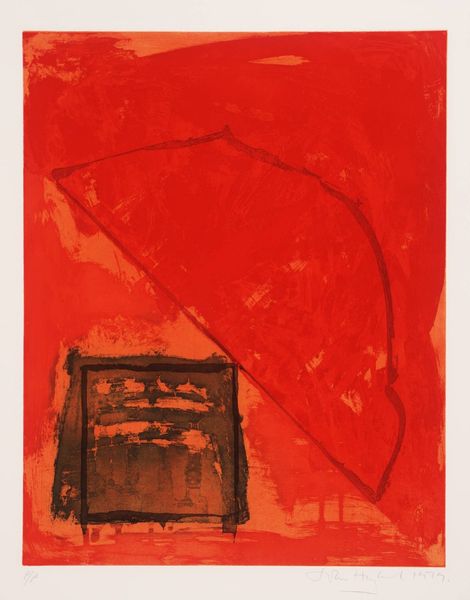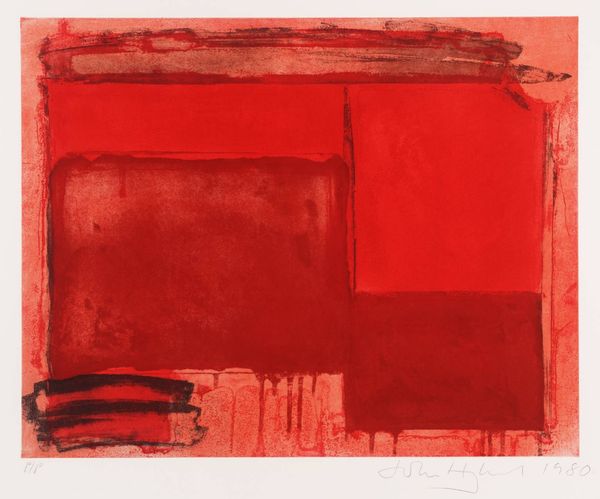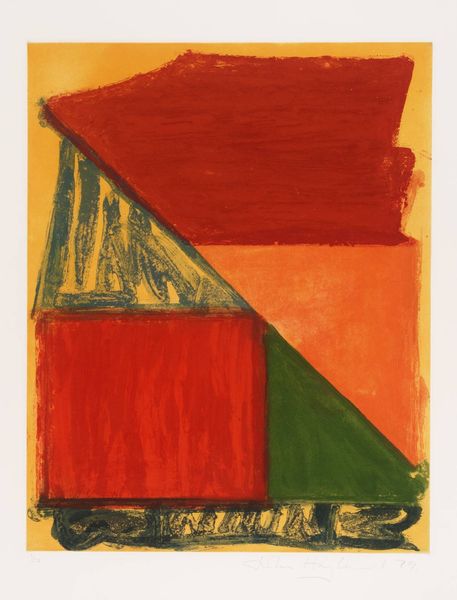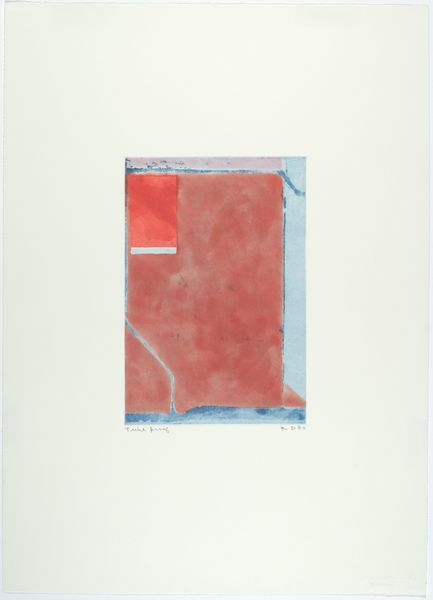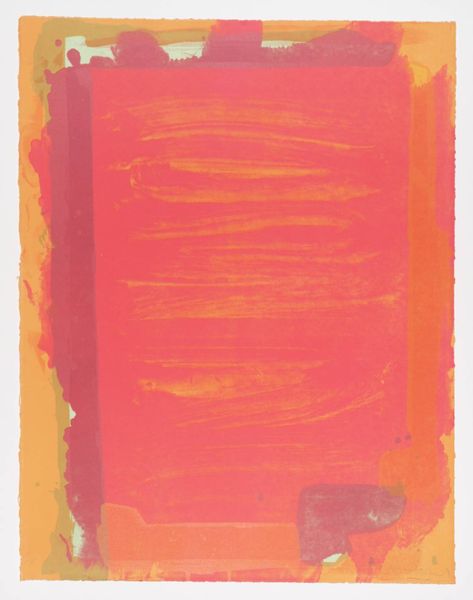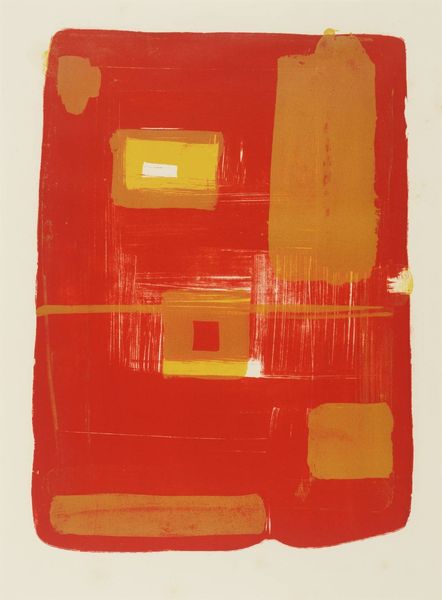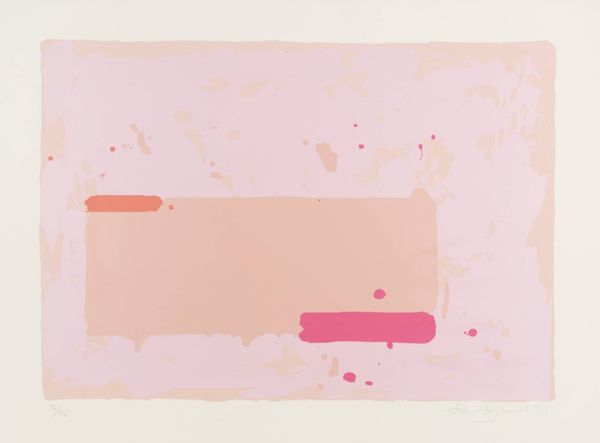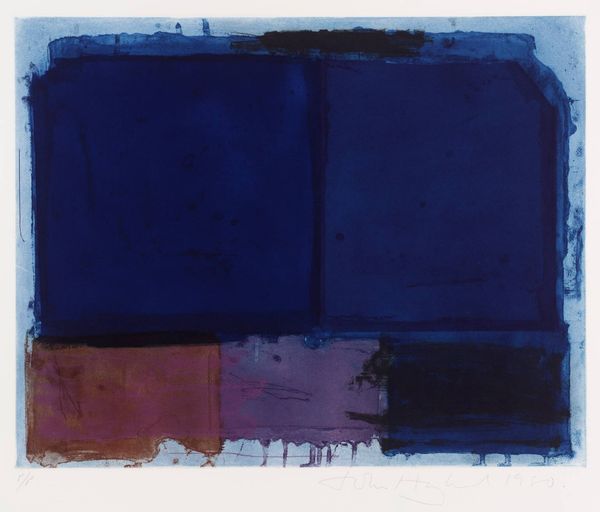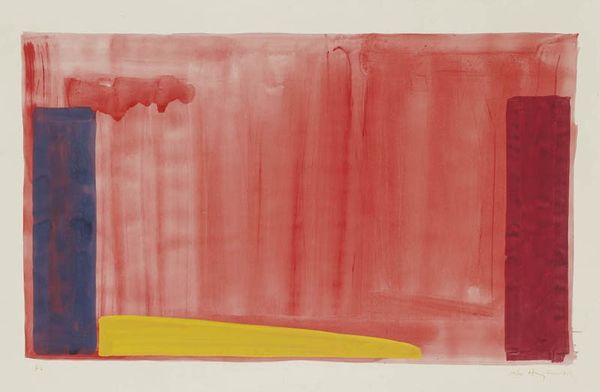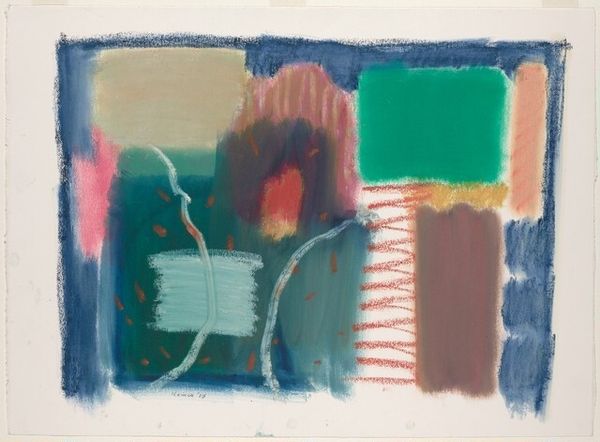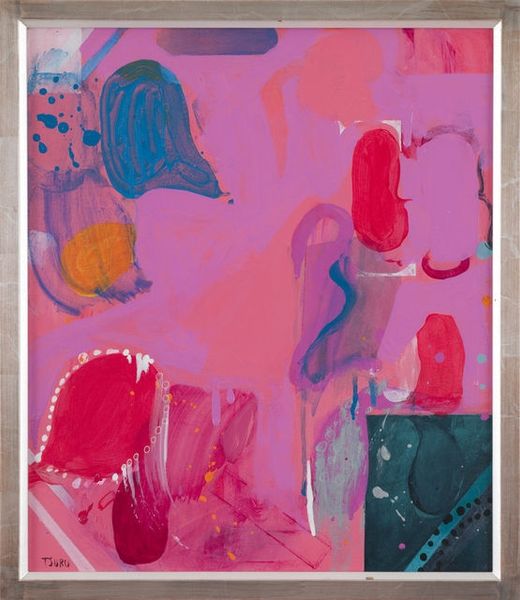
Copyright: John Hoyland,Fair Use
Curator: Here we have John Hoyland’s "Anking," created in 1979. Editor: Immediately, I'm struck by the somewhat raw, almost unfinished quality. You see the dripping paint, the porous edges of the shapes. There’s an immediacy to it; it’s like seeing the trace of its own making right there on the canvas. Curator: That's an interesting observation. The rough edges definitely lend it a sort of vulnerability, but there's also an assuredness in how the shapes are arranged and how colors interact, which brings to my mind how this all comes from the artist's unique vision. The symbolism is less overt and relies on an emotional resonance, playing off certain ideas or beliefs inherent within a society. The hues evoke familiar sensations – the calming blues, energetic reds – influencing our feelings toward it, almost tapping into a primal visual vocabulary. Editor: Absolutely. It speaks to the artist’s handling of the medium itself. The visible process feels almost collaborative between Hoyland and the acrylic paint. I imagine the push and pull—layering, staining—each application reacting with the previous, the liquid material finding its own level, doing its own thing within the artist’s general direction. Also, you have to think about acrylic’s place as a modern, synthetic material in the '70s, how that aligns with its accessibility, with potentially pushing art towards new audiences beyond traditional high art spaces. Curator: That makes perfect sense. In that light, I’d consider it not just for its material, but as a key part of its visual language. Its creation becomes the language itself, capable of stirring both conscious and unconscious sentiments. Editor: So, reflecting on “Anking,” I’m reminded how integral the material and its use are to unlocking an artwork's broader significance. Curator: Yes, a great example of visual language to understand the collective feelings toward cultural ideas in late 20th-century abstraction.
Comments
No comments
Be the first to comment and join the conversation on the ultimate creative platform.
